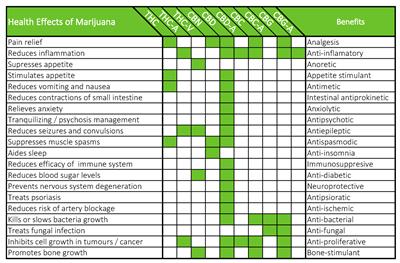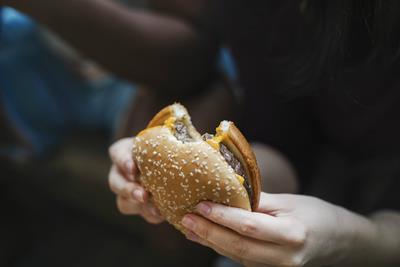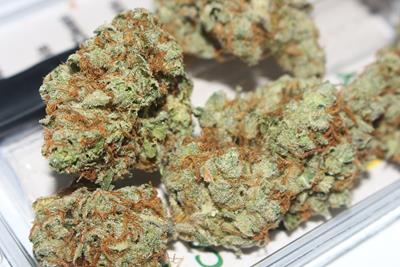
Wednesday September 12, 2018
By Erin Hiatt
 Health/Science
Health/Science
Getting the munchies after smoking marijuana is a cannabis consumer’s rite of passage and oftentimes a mainstream joke at a stoner’s expense. There is no shortage of images showing couch locked stoners in their pajamas eating a bag of nacho cheese Doritos or blowing through a box of cereal. The truth is, it cannot be helped (well, you could do something about the pajamas)! Believe it or not, there is a verifiable scientific reason why people who use cannabis frequently get the munchies, and it boils down to one word: neuroscience.
The Science Behind Cannabis and the Munchies
In 2015, some researchers from the Yale School of Medicine set out to study the neurons in the brain responsible for the hunger surge familiar to so many cannabis consumers. Using mice with circuits wired through their brains, researchers were able to study how cannabis influences appetite. Their findings, which appeared in the journal Nature, showed, “by observing how the appetite center of the brain responds to marijuana, we were able to see what drives the hunger brought about by cannabis and how that same mechanism that normally turns off feeding becomes a driver of eating.”
Consuming marijuana activates cannabinoid receptor 1 (CB1R) inside the brain, which is associated with increased appetite.
“We were surprised to find that the neurons we thought were responsible for shutting down eating, were suddenly being activated and promoting hunger even when you are full,” said Tamas Horvath, the study’s lead author. “It fools the brain’s central feeding system.”

This is good news for those who struggle with lack of appetite, especially cancer and AIDS patients. Figuring out how CB1R could be controlled may also have widespread and profound implications for those who struggle with obesity or experience symptoms of disordered eating, like anorexia nervosa, bulimia, or binge eating disorder.
Cannabinoid Receptor Research
CB1R has been on the radar of researchers for several years as a potential pathway to manipulate appetite, but early studies hit some snags. For example, in the early 2000s, drug-maker Sanofi-Aventis developed an investigational drug to manage obesity called Rimonabant, a CB1R cannabinoid antagonist. Marketed in Europe as Acomplia, it was used as an aid for those experiencing risk factors associated with being overweight and obese.
In the U.S., Food and Drug Administration (FDA) approval was not given to Acomplia because patients using the drug were at risk of depression and other psychiatric disorders, including suicidality. In 2008, the drug was pulled from the European market, and other pharmaceutical companies working on similar drugs were scared off.
In another study focusing on cannabis and hunger, scientists used the sense of smell to see how cannabis influences hunger. Once again, mice were used and then exposed to banana and almond oil to test their scent sensitivity. Most mice, and humans, over time experience olfactory habituation, or go “nose blind,” which was the case for the mice not dosed with THC. But, mice that had been given THC continued to sniff at the oils, showing enhanced sensitivity to the scents. They also ate more food than the mice not dosed with THC.

The researchers concluded that one of the ways that THC increases appetite is by making cannabis users more sensitive to the scent of food, which may allow us to better taste flavors. Research has also shown that cannabis can increase the release of dopamine, long associated with pleasure, which could make the actual eating experience more pleasurable. For one last push into munchie territory, THC also interacts with ghrelin, a hormone that increases appetite. The endings of these studies also seems to have signaled the end of research. Since then, investigations into how CB1R could be harnessed for good are practically non-existent.
Running with the researcher’s findings and formulating an admittedly very unscientific theory, one could assume that potent strains may be the most likely to usher in the munchies. Some strains with high percentages of THC are The White at almost 24 percent, followed closely by Bruce Banner, Ghost OG, and Chemdawg, all at a little more than 23 percent.
Remember, if you have enjoyed some cannabis and you suddenly start eyeing that box of cookies in the pantry – it’s not your fault, it’s science!
Do you experience the munchies after consuming cannabis? Let us know if the comments below!







